When the weather starts to get cold, growing ornamental kale can be a great way to add a splash of color to your fall and winter garden.

We link to vendors to help you find relevant products. If you buy from one of our links, we may earn a commission.
But you may be wondering whether or not it’s safe or enjoyable to eat. Let’s discuss!
What Is Ornamental Kale?
Ornamental Kale (Brassica oleracea var. acephala) is part of the Brassica family, along with cabbage, broccoli, brussels sprouts, and cauliflower.
Genetically, it’s the same as the culinary type that we love to eat. However, it’s been hybridized to look more like a flower with purple, pink, and/or white leaves.
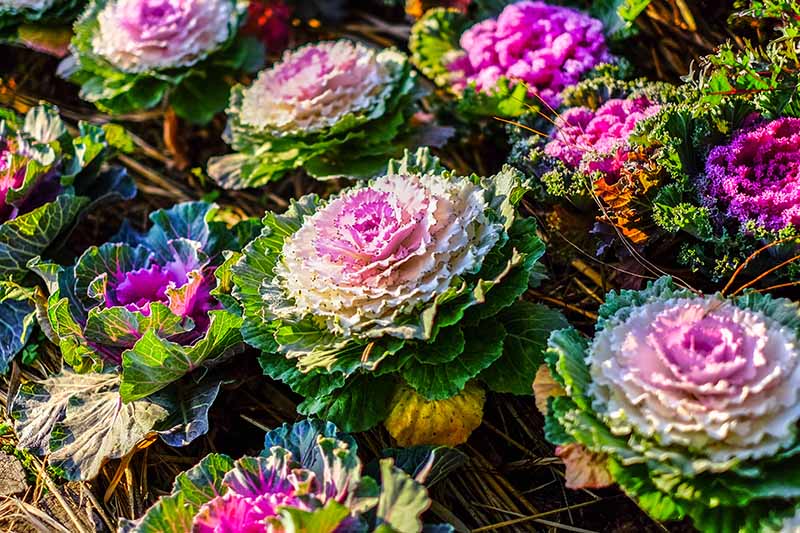
Sometimes mislabeled as ornamental cabbage, you can tell the difference by looking at the leaves: kale is curly or ruffled, whereas cabbage has leaves that are broad and smooth.
Ornamental kale is liked by gardeners who want to add some color to their fall and winter gardens and containers, as it grows well in cooler weather. In fact, the colors become their most vibrant once night temperatures start dropping below 60°F. However, these colors will start to fade once nighttime temperatures start dropping to 20°F and colder.
In addition to providing a pretty addition to your garden, you may be wondering if there’s any potential nutritional benefit to these “ornamental” plants. Let’s take a look, shall we?
Is It Edible?
Apart from their looks, a key difference between this and the leafy greens you buy at the grocery store is that this variety isn’t grown for flavor.
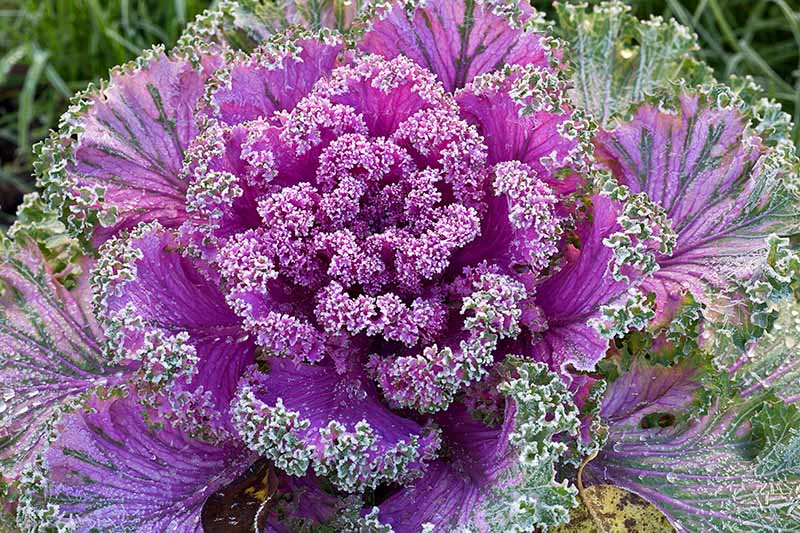
As a result, the ornamental stuff is much less flavorful than the “edible” culinary leafy greens. However, the leaves of these varieties are safe to eat. Just make sure to stay away from the roots, which are poisonous in any type of kale.
A Note of Caution
Ornamental kale plants purchased at a nursery may not have been grown organically, and there is a chance that they may have been sprayed with potentially toxic chemicals including pesticides or herbicides that are not food safe.
If you’re unsure if they’re safe to eat, it’s better to err on the side of caution and use these plants only for decorative purposes.
The main difference is that the leaves of the more decorative cool-season garden favorite are much more bitter than those of the varieties you’d typically grow for eating.
Still, if you’re interested in eating the more decorative plants from your garden, you can decrease some of the bitterness by boiling the leaves before adding them to recipes like casseroles or a stir-fry.
If bitterness isn’t your thing, but you don’t want those beautiful leaves to go to waste, you can use them as a garnish, or plate other foods on top for an impressive presentation.
Ornamental Kale Is Rich in Nutrients
In addition to being safe to eat, the leaves of this plant are also nutritious.
As is the case with ‘Lacinato,’ ‘Russian Red,’ curly-leafed, and other culinary varieties, the ornamental variety is also a good source of vitamins A, C, and K, as well as calcium and various antioxidants.
In fact, a study published in the journal BMC Genomics found that those bright splashes of pink and purple are due to compounds called anthocyanins.
Anthocyanins, also found in blueberries and purple carrots, are pigments with powerful antioxidant properties.
A review published in the journal Nutrients found that diets rich in anthocyanins are associated with a reduction in inflammation, obesity, and obesity-related chronic diseases.
More Than Just Pretty to Look At
Colorful and decorative, the ornamental variety is a beautiful addition to a fall or winter garden that also happens to be edible.
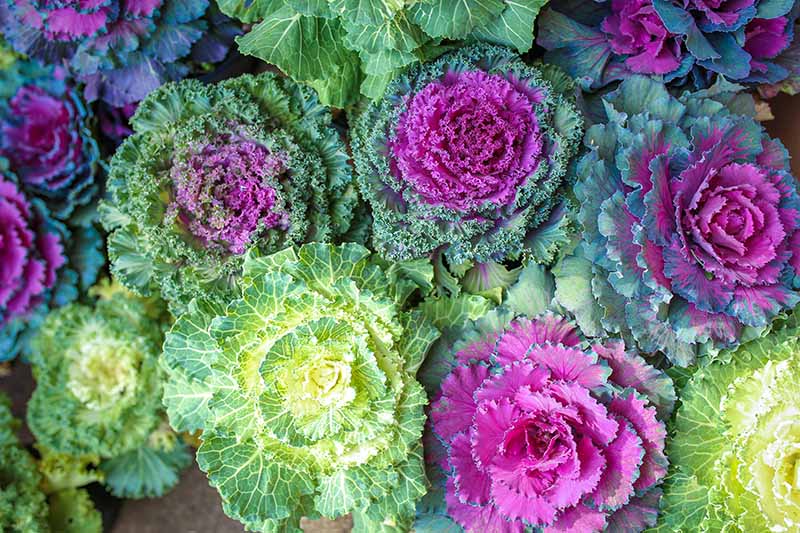
However, as it can be quite bitter, it’s not for everyone. If you do decide to eat it, make sure that it hasn’t been sprayed with any potentially toxic chemicals and rinse the leaves really well!
Do you eat yours? Have any tips? Let us know in the comments below.
Looking for more info on the benefits of eating homegrown leafy greens? Be sure to check out our article on the nutritional properties of raw kale.
Next up, don’t miss these growing guides:
- How to Grow Collard Greens, A Taste of Southern Culture
- How to Plant and Grow Swiss Chard
- Harvest Hearty Greens: How to Grow Kale
© Ask the Experts, LLC. ALL RIGHTS RESERVED. See our TOS for more details. Uncredited photos: Shutterstock.
The staff at Gardener’s Path are not medical professionals and this article should not be construed as medical advice intended to assess, diagnose, prescribe, or promise cure. Gardener’s Path and Ask the Experts, LLC assume no liability for the use or misuse of the material presented above. Always consult with a medical professional before changing your diet or using plant-based remedies or supplements for health and wellness.


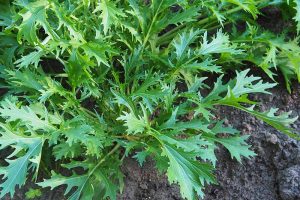
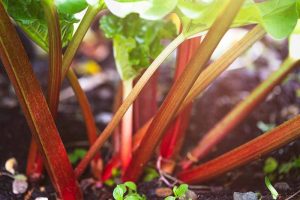
Great to know Cabbage Kale is edible. Can it be used in a smoothie without cooking first? (went to the grocery store for Kale but they had these plants on sale)
Hi Eileen! Ornamental kale that was organically grown is totally safe to eat raw or cooked, however it could be a little tough and bitter when raw. It might be a better option to cook it.
If you do decide to add it to a smoothie, you can make it a little sweeter and creamier by adding extra banana, yogurt, or some honey. Hope this helps!
I have what looks like Kale in my yard but what’s weird is I’ve never found Kale anywhere on the internet that looks like it. It was about 3 feet tall last year, the entire plant was dark purple and the leaves are curly. This year I chopped down the main stalk but little Kale leaves have come in
Apologies for our very delayed reply to this- can you share a photo?
Would eating the ornamental kale as microgreens improve the flavour?
Sure, you could give microgreens a try! But most varieties of ornamental kale are typically sold as nursery plants rather than being grown at home from seed. If you’re going to the trouble of sprouting and sowing seeds, a tastier variety is what I’d recommend.